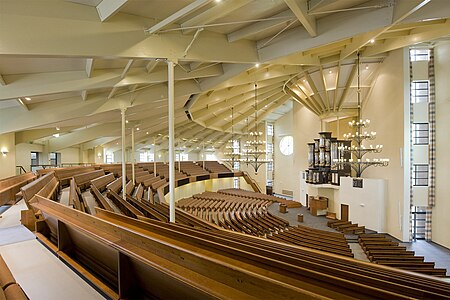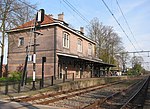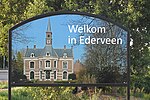De Hoeksteen, Barneveld
2008 establishments in the Netherlands21st-century religious buildings and structures in the NetherlandsBarneveld (municipality)Churches completed in 2008Churches in Gelderland ... and 4 more
Dutch building and structure stubsEuropean church stubsInfobox religious building with unknown affiliationReformed church buildings in the Netherlands

De Hoeksteen (The Cornerstone) in Barneveld, the Netherlands, is the second largest church building in the Netherlands. It is used by the congregation of the Gereformeerde Gemeenten in Nederland, a highly conservative denomination. The church services are conducted using exclusively the Statenvertaling (Dutch for States Translation) of the Bible.
Excerpt from the Wikipedia article De Hoeksteen, Barneveld (License: CC BY-SA 3.0, Authors, Images).De Hoeksteen, Barneveld
Jan Seppenplein, Barneveld
Geographical coordinates (GPS) Address Nearby Places Show on map
Geographical coordinates (GPS)
| Latitude | Longitude |
|---|---|
| N 52.133333333333 ° | E 5.5833333333333 ° |
Address
Jan Seppenplein 9
3772 BL Barneveld
Gelderland, Netherlands
Open on Google Maps










